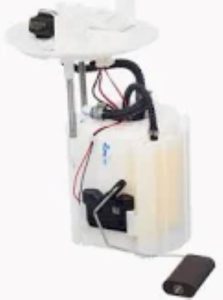Correcting fuel pump electric issues begin with identifying the problem and are generally related to horrible electrical wiring, relays or connectors. Since fuel pumps are dependent upon the electrical system of your vehicle to be able to send gasoline from the tank and directly into your engine, damages in any part of the circuit can result in an inadequate amount of gas being delivered as well as complete shutdown of the pump itself.
Verify Fuel Pump Relay: A frequent area for difficulty is a fuel pump relay failing. It provides power to the pump when the ignition is turned on. Find the relay, usually under the hood in a fuse box. Ensure the relay is sending the required 12 volts to the pump using a multimeter. A responsible for the fuel relay, without which no power is sent to the pump which leads to system failure.
Examine the Wiring Over time, wires that take power to the fuel pump can corrode or become broken. Check the connections and then follow the wire(s) to look for any visual fraying or corrosion Using a multimeter to test continuity of the wiring makes sure that the electrical current is flowing properly. Once you have cut or unfastened the wires, you either need to remove them and use new ones during a replacement, or re-solder if able.
Check the Fuse for Your Fuel Pump A blown fuse could also be to blame. Identify your fuse box and look for the fuel pump fuse. Look at to check if it has any breaks in the eyes with light起。 If the fuse is blown, switch out to a new one with the same or required amperage, generally between 15-30 amps. Fuses, as you would expect, help avoid overloading the electric circuitry and using the correct amperage fuse is essential to avoid causing more damage.

Check Ground Connections: Fuel Pump Relays will fail intermittently if there is a bad ground on the cars with the in-tank fuel pump. Inspect the ground wire going from the pump to the car's chassis and make sure it is tightly connected without any corrosion. Bad ground connections may impede on the electrical circuits, causing defective fuel delivery.
Step 2: Measure Voltage at the Pump If your wiring, relay, and fuse are in working order, check to see if there is voltage being applied to the fuel pump. When the engine is running for a constant 12 volts that goes to the pump. If the voltage is low, this suggests an issue farther up in the electrical system. The pump itself does the heavy lifting, but sometimes pump failure is backtracked to underpowered wiring and inadequate voltage delivery for long life without unnecessary strain. A pump that doesn't make at least 30 psi or higher (typically 60) just isn't going to cut it in most fuel injection systems.
A 2020 automotive repair study showed that 25 percent of all fuel pump failures could be attributed to electrical issues, making regular maintenance and inspections crucial.
Elon Musk “When something is important enough, you do it even if the odds are not in your favour.” —679) The first step is to establish that something is possible: Then probability will occur …— Elong musk The logic for fixing fuel pump electrical problems is the same: finding the root of the problem makes the solution easy!
This will allow you to get more life out of your fuel pump and experience better vehicle operation as a whole. For more replacement ideas, go to Fuel Pump and get high quality products that can suit your car requirements.